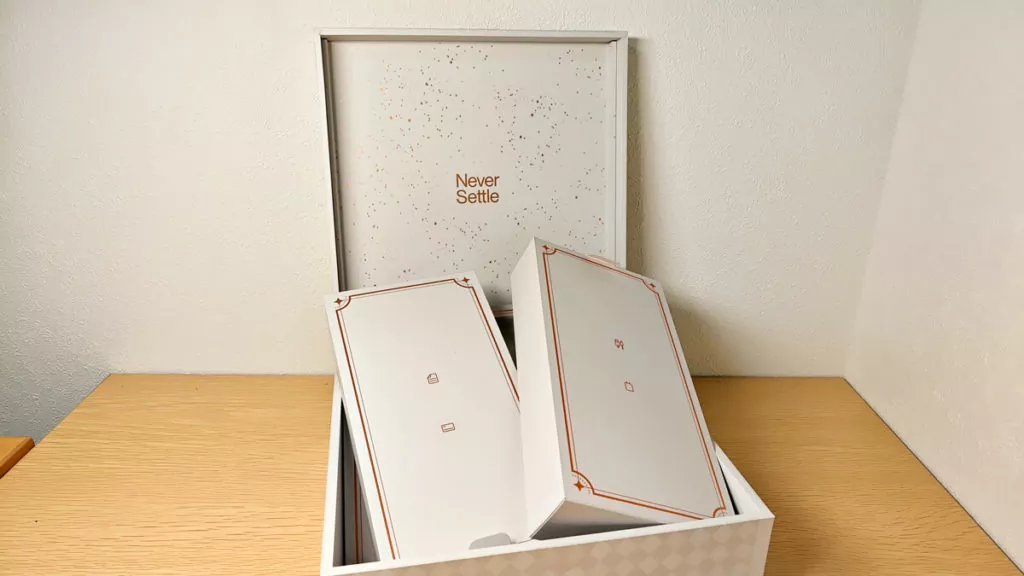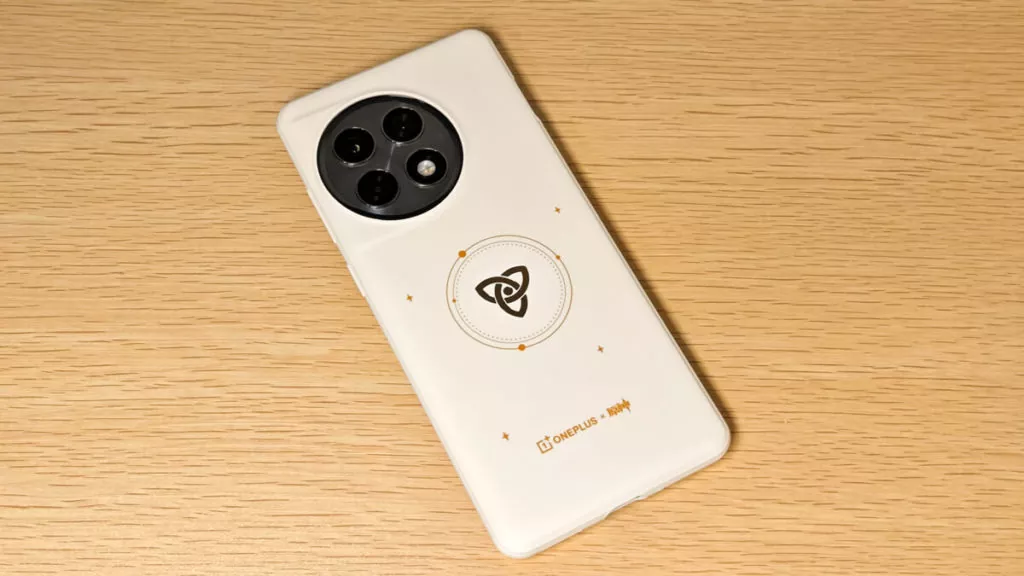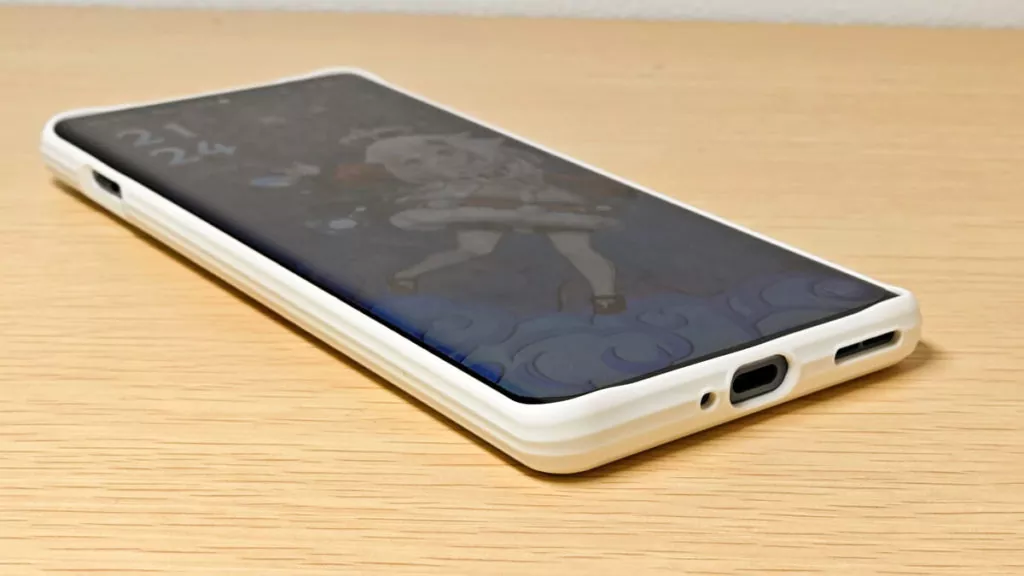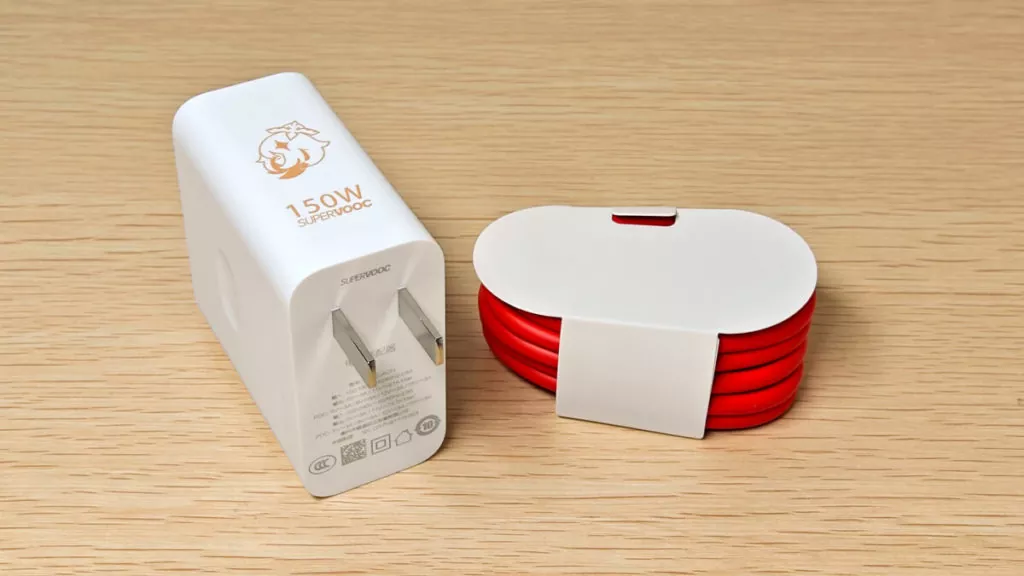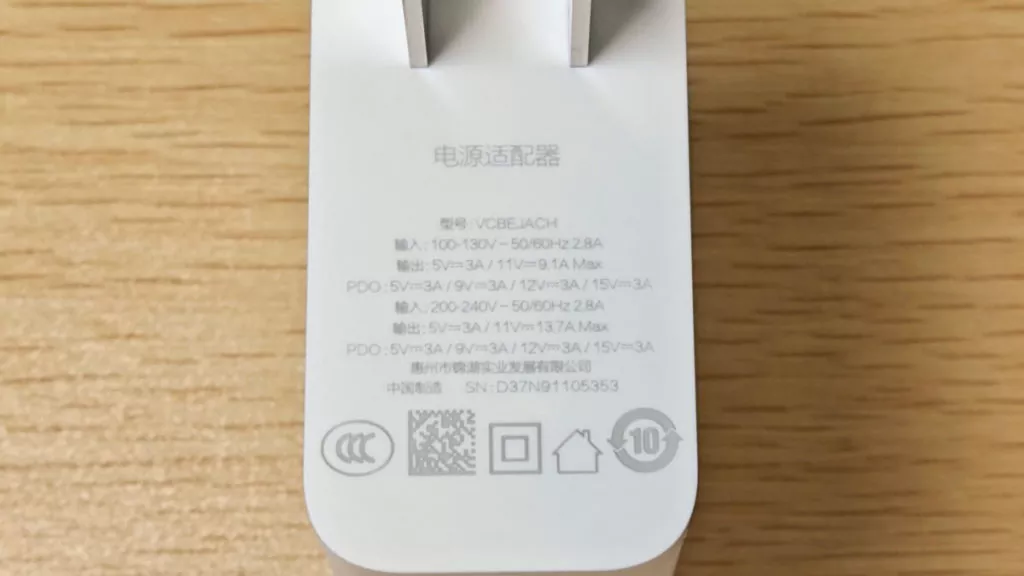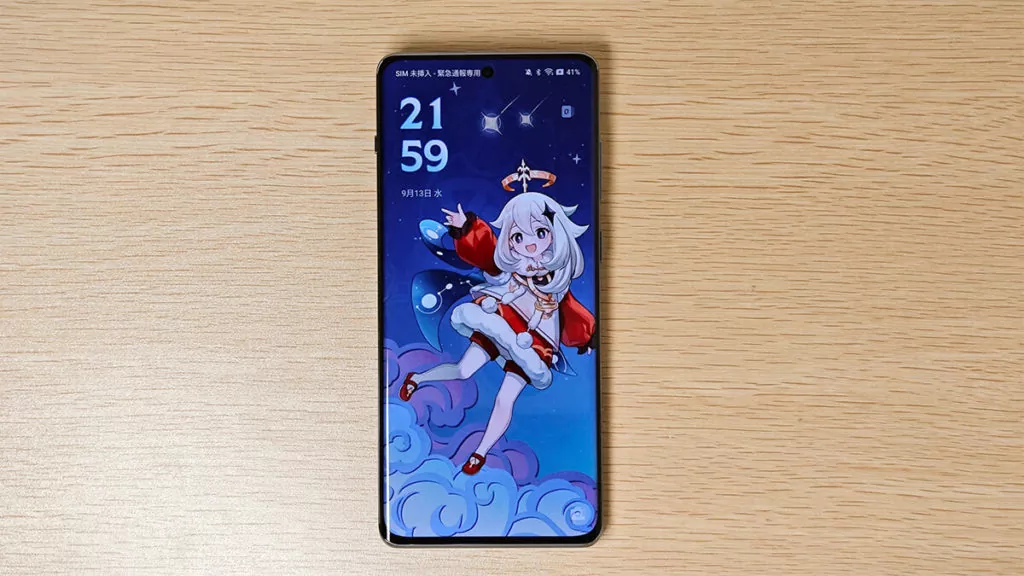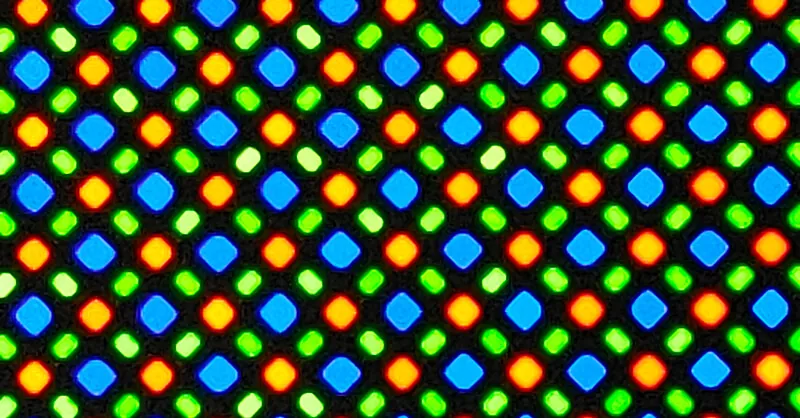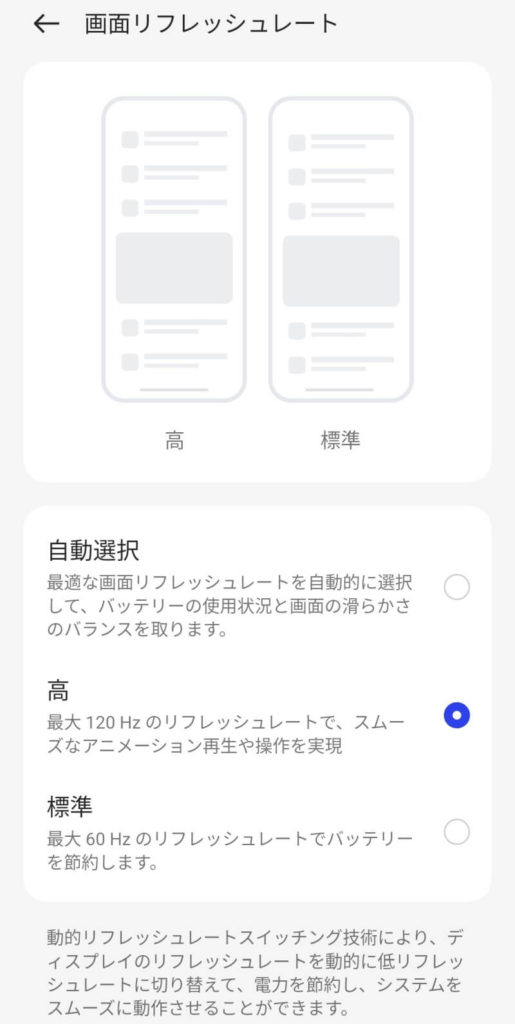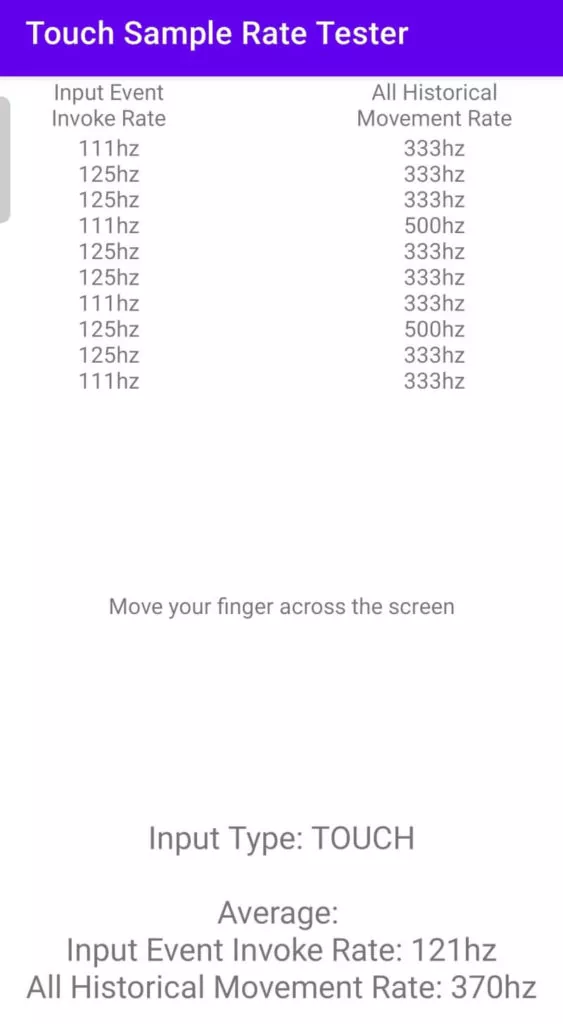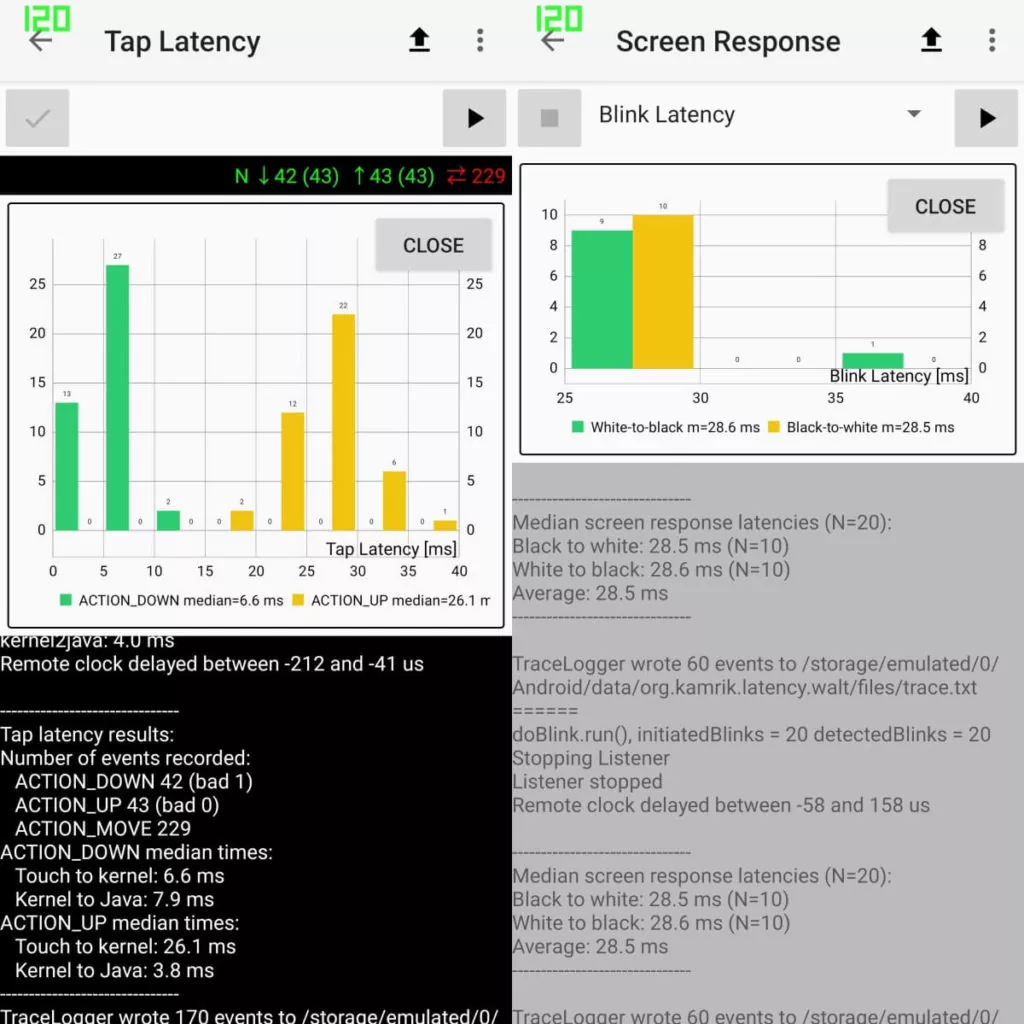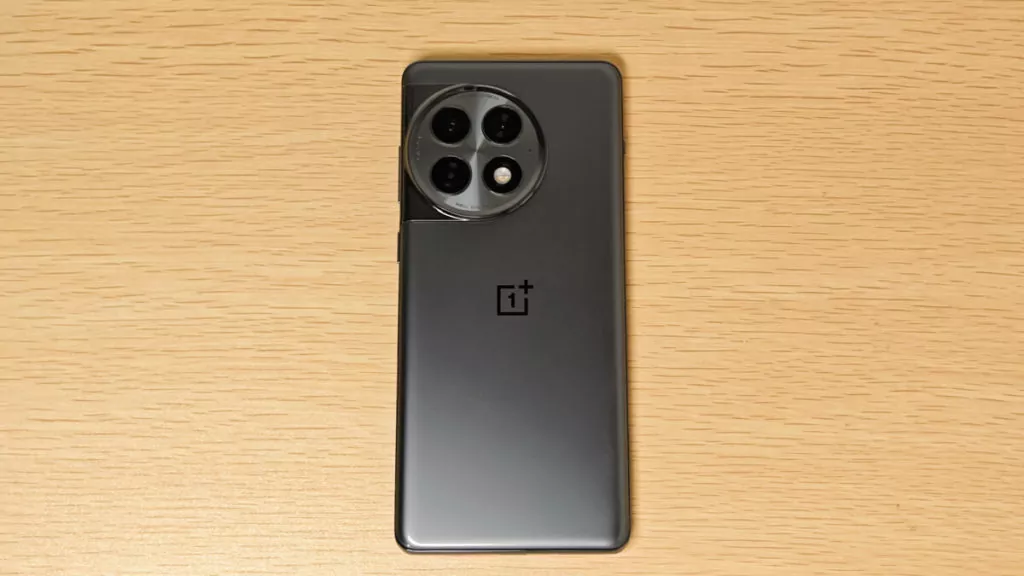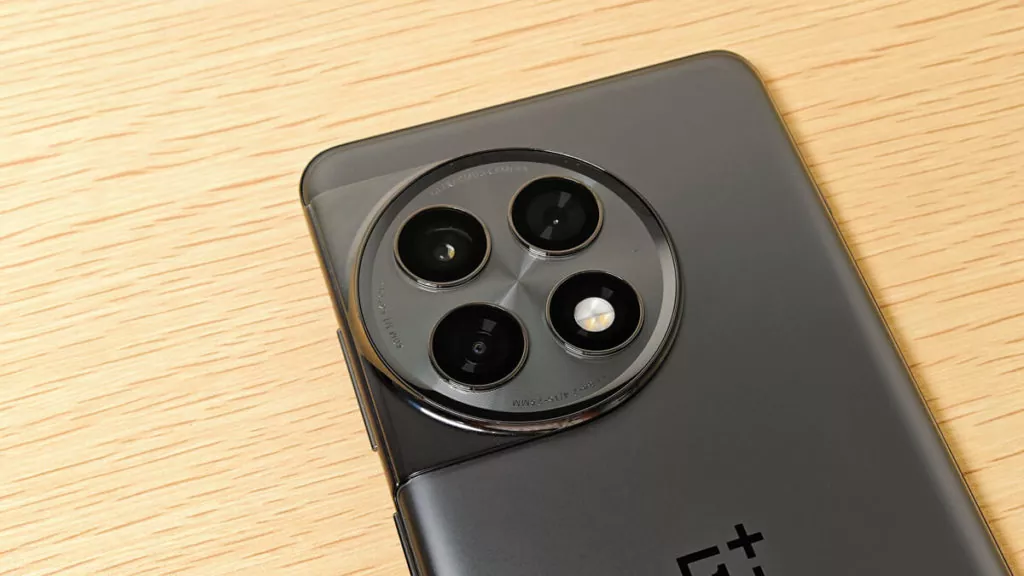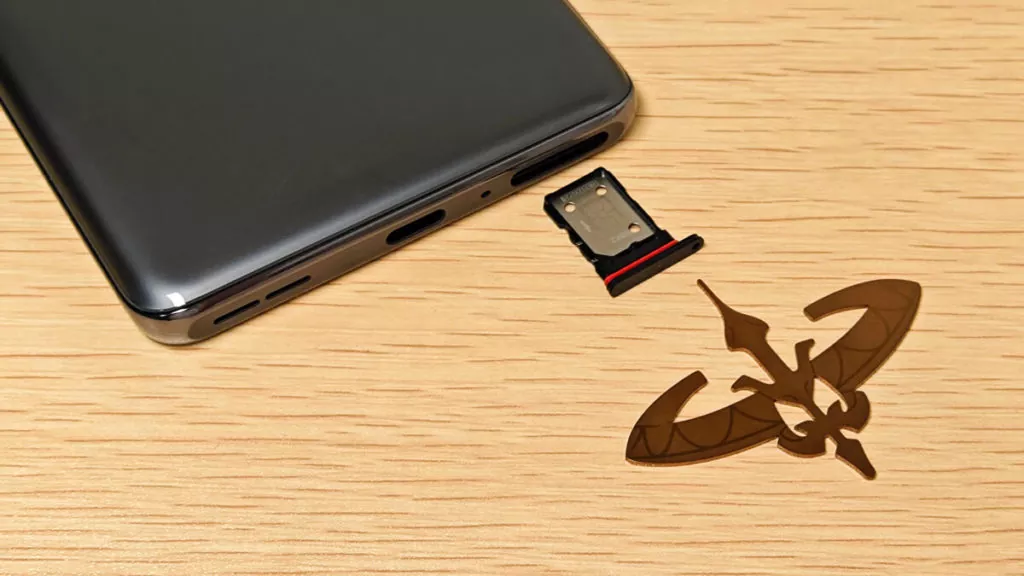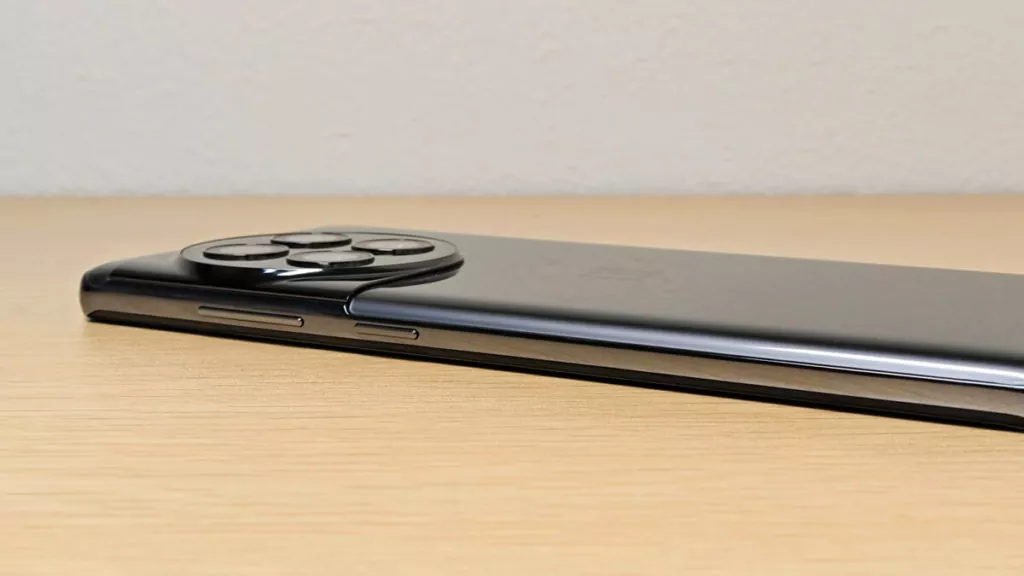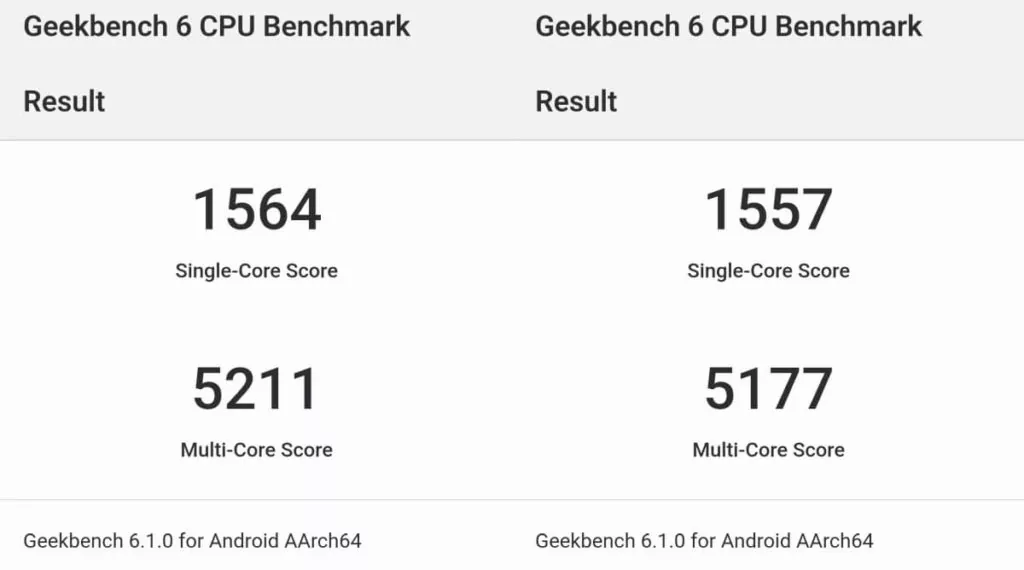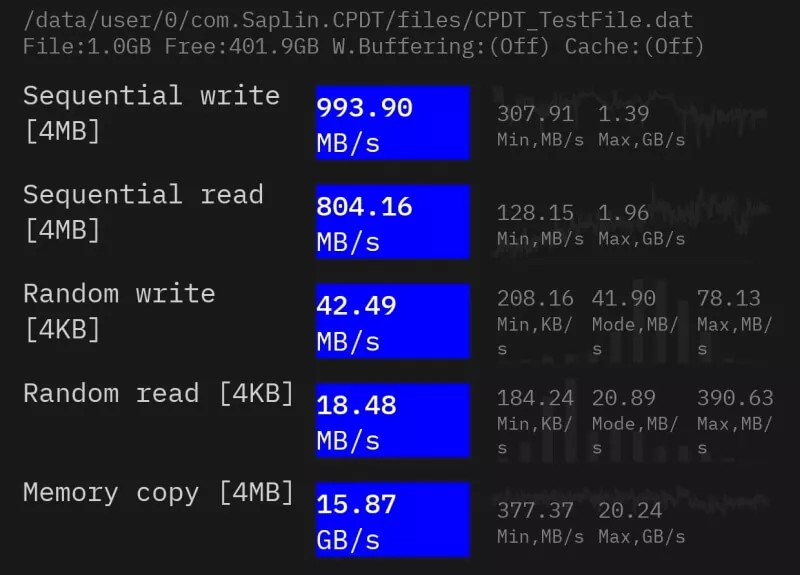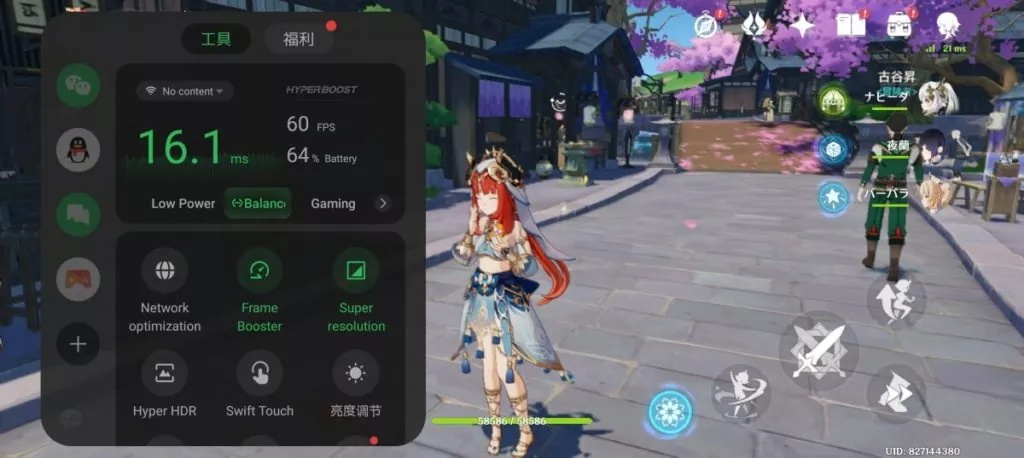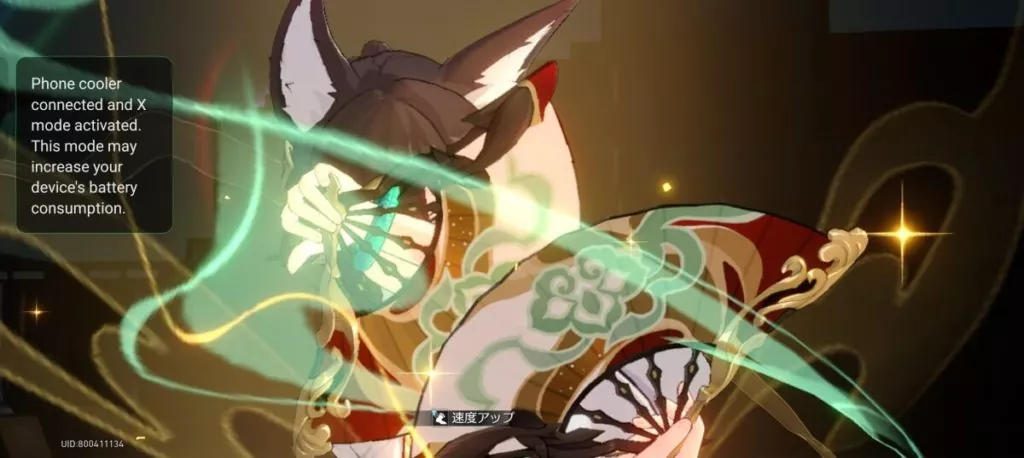I bought OnePlus Ace 2 Pro (一加 Ace 2 Pro 原神派蒙主题礼盒).
Includes Paimon motif goods
The OnePlus Ace 2 Pro is powered by the Snapdragon 8 Gen 2.
The special edition in collaboration with Paimon from Genshin Impact, has the same body design as the standard edition, but comes with a number of Paimon-designed accessories and goods, including a case, acrylic stand, charger, and SIM pin.
This review is done on the 16GB+512GB version, PJA110_13.1.1.405 (CN01).
- Snapdragon 8 Gen 2 that combines high performance and power savings
- Frame interpolation and upscaling available
- 5,000mAh battery with 150W charging capability
- Easy to press in-screen fingerprint sensor
- Widevine L1
- More limited performance
- High brightness mode not triggered in HDR video
- Frame interpolation is not available for video
| OnePlus Ace 2 Pro (PJA110) | |
|---|---|
| OS | Android 13 |
| RAM | 12GB/16GB/24GB LPDDR5X |
| Storage | 256GB/512GB/1TB UFS 4.0 |
| SoC | Snapdragon 8 Gen 2 |
| Display | 6.74inch 2772×1240 Aspect ratio 20.12:9 120Hz AMOLED |
| Size | 163.1 × 74.2 × 8.98mm |
| Weight | 210g |
| SIM | nano SIM + nano SIM |
| Rear camera | 50MP (OIS / Sony IMX890) + 8MP (Ultra-wide Sony IMX355) + 2MP (Macro OMNIVISION OV02B10) |
| Front camera | 16MP (Samsung S5K3P9) |
| Battery | 5,000mAh |
| USB Port | USB Type-C (USB 2.0) |
| Bands | 2G: GSM 850/900/1800/1900MHz 2G: CDMA BC0 3G: UMTS(WCDMA) bands 1/4/5/8 4G: TDD-LTE bands 34/38/39/40/41 4G: FDD-LTE bands 1/3/4/5/7/8/18/19/26/28A 5G NR:n1/n3/n5/n8/n28A/n41/n77/n78 |
Index
- 1 Includes Paimon motif goods
- 2 Display: 1.5K resolution with narrow bezel
- 3 Back: Fingerprints are hardly noticeable
- 4 Camera: beautiful despite cosmetic phone
- 5 Speaker: Stronger treble
- 6 Port: Fast charging at 150W
- 7 Performance: Stronger throttling
- 8 OS: Supports frame interpolation for games
- 9 Bootloader Unlockable
- 10 Conclusion
The slogan “Never Settle” is written inside.
To begin with, you will find an acrylic case with an illustration of Paimon and a piece of paper with the illustration printed on it.
Next is the protective case, acrylic stand, and instruction manual.
The Paimon Collaboration theme is not pre-installed, but can be downloaded from the theme store by scanning a code written on a piece of paper.
The protective case is smooth to the touch.
With its white case and black camera, it looks as if it represents Paimon’s hair and diadem.
The sides of the case are stepped for better grip.
Paimon sticker and SIM pin also included.
It is quite large for a SIM pin.
The design is only on the front side, and the back side has only a copyright notice.
The charger also has an illustration of Paimon on it.
Although the charger is capable of up to 150W, it is limited to 100W fast charging in 100V regions.
Display: 1.5K resolution with narrow bezel
The OnePlus Ace 2 Pro features a 6.74″ 2772 x 1240 resolution display.
Protective film is attached from the beginning.
Unfortunately, it is an edge display.
Unlike the old edge display, it is not a sharp curve, so the edges are not extremely difficult to see.
The array is diamond pixels.
When measuring brightness LX-1336B during all-white HDR video playback with automatic brightness adjustment on, we reached a maximum of 500 nits.
When measured outdoors in non-HDR all-white, the brightness gradually increased, reaching a maximum of about 680 nits. It feels slightly darker when used in sunlight.
The higher the brightness, the more likely it is that color accuracy will decline, so OnePlus may be emphasizing accuracy over brightness, but I doubt anyone will be viewing photos or movies in direct sunlight, and I would prefer that brightness be given priority.
Brightness during HDR is not increased by activating “Bright HDR Video Mode”.
Refresh rate is 120Hz.
The realme GT5 allows you to set the maximum for each app individually, but OnePlus does not.
When the touch sampling rate was measured with the Touch Sample Rate Tester, the Input Event Invoke Rate was 120 Hz and the Movement Rate was about 370 Hz for both single-touch and multi-touch in game mode.
The touch latency measured by the WALT Latency Timer was 14.5 ms and the screen drawing latency was 28.5 ms, for a total of 43 ms.
It’s Widevine L1 so you can stream in HD quality.
It is equipped with an in-screen fingerprint sensor and authentication is highly accurate.
While cheaper smartphones are often placed at the bottom of the screen, the OnePlus Ace 2 Pro is placed closer to the center of the screen for easy pressing.
Unfortunately, there is no Paimon collaborated animation.
Back: Fingerprints are hardly noticeable
The design of the OnePlus 11 is continued on the back, with the circular camera positioned in the upper left corner.
Reflections are subdued yet glossy, and while fingerprints are less noticeable, they are not fingerprint-proof, so smudges may become easily visible after a while.
The area connecting the camera bump to the left side is prone to fingerprints.
It weighs 213.3g.
Camera: beautiful despite cosmetic phone
OnePlus Ace 2 Pro has tripe cameras:
- 50MP (OIS / Sony IMX890)
- 8MP (Ultra-wide Sony IMX355)
- 2MP (Macro OMNIVISION OV02B10)
Hand-held photos are saved here.
They tend to be darker and darker shades.
It is beautiful even at 2x zoom.
At 2x zoom, the tint changed from 1x and sometimes became lighter.
Although coarseness is visible when zoomed in, it is sufficient for everyday use.
Night scenes can also be captured reasonably well.
Speaker: Stronger treble
The OnePlus Ace 2 Pro has stereo speakers of both the receiving and dual-use types.
If anything, the treble is stronger and vocals are easier to hear.
The bass is also beautiful there.
Dolby Atmos support.
The audio output delay was 34.6 ms when measured with the WALT Latency Timer.
Bluetooth supports AAC / aptX / aptX HD / aptX TWS+ / aptX Adaptive as well as LDAC.
LHDC is an enclosure specification that can only be used with the OPPO Enco X series and OnePlus Buds Pro series, so LHDC cannot be used with other products.
Unlike realme, it is still conscientious to have a note in the product specifications, but I would like to see the restrictions removed.
 It has a huge 602 mm³ vibration motor, making it a massive vibrator that is not cheap.
It has a huge 602 mm³ vibration motor, making it a massive vibrator that is not cheap.
The O-HAPTICS demo allows you to experience the vibrations of ticking wheels and popping balloons, which is pleasant.
Port: Fast charging at 150W
The OnePlus Ace 2 Pro supports 150W fast charging.
Since the battery is quickly filled to 100% after being plugged in for a short time, it can last a whole day with only a short charge in the morning, without having to be recharged at night.
There is an infrared port on the top.
The pre-installed IR Remote application can be used as a remote control for home appliances and other devices.
Supported bands are:
- 2G: GSM 850/900/1800/1900MHz
- 2G: CDMA BC0
- 3G: UMTS(WCDMA) bands 1/4/5/8
- 4G: TDD-LTE bands 34/38/39/40/41
- 4G: FDD-LTE bands 1/3/4/5/7/8/18/19/26/28A
- 5G NR:n1/n3/n5/n8/n28A/n41/n77/n78
The power and volume buttons are located on the right side.
Alert slider on the left side.
It can be switched to silent mode in one shot.
Performance: Stronger throttling
The OnePlus Ace 2 Pro is powered by the Snapdragon 8 Gen 2.
Although performance is more moderately limited by heat than realme GT5, normal applications can be forced to terminate at around 40°C.
In Geekbench 6, the package name-disguised version (i.e., not affected by the manufacturer’s illegal boost) had single-core 1564 and multi-core 5211, while the normal version had single-core 1557 and multi-core 5177.
There is no significant change, and it appears that performance is not controlled by package name determination.
The 3DMark Wild Life Extreme Stress Test was forced to terminate when the battery temperature reached 40°C due to heat generation.
When in performance mode, the system is no longer forced to terminate.
However, from week 6, the score drops significantly, indicating that performance is limited even in performance mode.
It is “normal” for the temperature to exceed 40°C with operations that require high performance, but the restriction may be made stronger on the assumption that an external cooler/radiator will be used.
PCMark Work 3.0 (package name disguised), which measures performance in everyday use such as document manipulation, scored 12981.
UFS 4.0 storage and LPDDR5X memory.
Sequential and random writes are top class speeds, and reads are there.
Playing Genshin in Gaming mode, highest quality, 60FPS setting, Fontaine (underwater to land) with WeTest PerfDog, the average power consumption was 94.48 mW per FPS at 55.8 FPS.
Even in Gaming mode, it does not provide the highest performance and seems to be tuned slightly toward power saving.
Battery temperatures rose to a maximum of about 42°C.
Playing Honkai: Star Rail at highest quality for 15 minutes averaged 46.819 FPS, with an average consumption of 119.95 mW per FPS.
CPU and GPU temperatures show that they are limited immediately after rising to nearly 70°C.
OS: Supports frame interpolation for games
Gesture controls are abundant, and a double tap can be used to turn the screen on and off, as well as to write text to trigger an action.
With the additional gesture, you can choose any app you like.
In game mode, some applications such as Genshin can use a frame interpolation function called Frame Booster to bring the FPS to 120 FPS.
Unfortunately, newer games such as Honkai: Star Rail are not supported at this time.
In particular, scrolling, horizontal movement of the camera, etc. will be smoother.
If Frame Booster is enabled in the 30FPS setting on Genshin, frame interpolation to 60FPS can be performed.
If it does not need to be excessively smooth, this will reduce the load.
Super resolution is an upscaling feature that sharpens the image and can be added to game mode for any application.
With HaraShin, you can turn on all three types of HDR at the same time: frame interpolation, upscaling, and Hyper HDR, which intensifies colors.
亮度~をオンにすると明るさの調節バーが現れ、バーの右側の太陽アイコンを押せばゲーム中だけ明るさを固定できます。
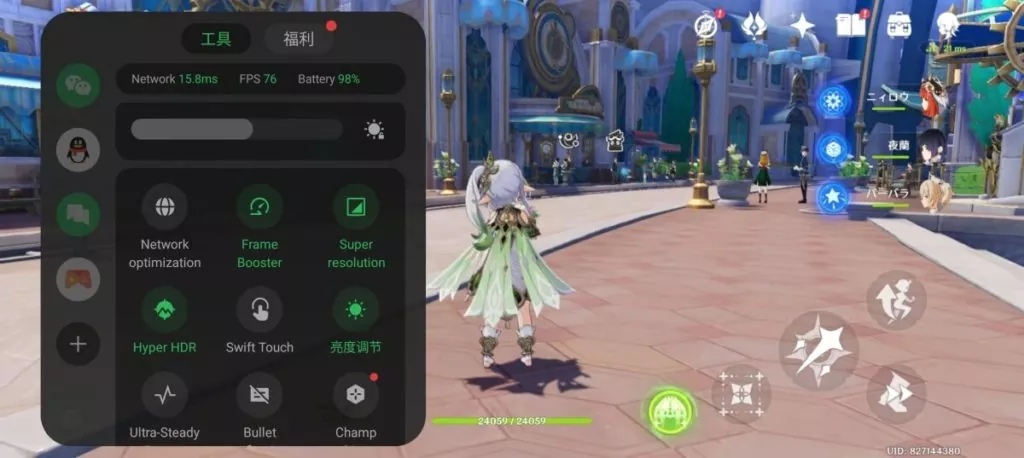 When interpolating frames to 120 FPS, the native frame rate is capped at 40 FPS, which is then multiplied by 3 to 120 FPS with the help of Pixelworks X7.
When interpolating frames to 120 FPS, the native frame rate is capped at 40 FPS, which is then multiplied by 3 to 120 FPS with the help of Pixelworks X7.
Measured with the OnePlus 45W radiator installed and frame interpolation enabled at the highest quality and Fontaine, we were able to play at an average of 37.785 FPS (→113.4 FPS).
Since the load was reduced while the display was smooth, the cooling of the radiator prevailed and the battery temperature dropped quickly, especially during low load situations such as when moving around.
Bluetooth pairing with a OnePlus 45W radiator or other OnePlus external cooler will release X mode, which provides even higher performance than Gaming mode.
Playing Honkai: Star Rail in X mode averages 56.268 FPS, with battery temperatures kept below 30°C.
Bootloader Unlockable
In the case of OnePlus, there is no need to apply for Bootloader Unlock, just run fastboot flashing unlock in Bootloader after enabling OEM unlock in the developer options.
You MUST remove the screen unlock method (password off) before BLU.
With the Magisk module I created, you can enable location history, near-by share, etc.
Conclusion
- Snapdragon 8 Gen 2 that combines high performance and power savings
- Frame interpolation and upscaling available
- 5,000mAh battery with 150W charging capability
- Easy to press in-screen fingerprint sensor
- Widevine L1
- More limited performance
- High brightness mode not triggered in HDR video
- Frame interpolation is not available for video
Thanks to the combination of Snapdragon 8 Gen 2 and Pixelworks X7, games that support frame interpolation can be displayed smoothly while reducing the load.
The bottom line is that 8 Gen 2 can be used for games that do not support it, and 1.5K upscaling can be used for any game, so you can reduce the resolution of the game to compensate for the upscaling.


